There's a quiet revolution underway in public transport, and it has nothing to do with new train lines or shiny buses. It's about something much smaller but arguably more powerful: removing friction from the everyday experience of getting around. Think fewer taps, less queuing, no need to even take your phone out of your pocket.
We're entering a phase where the idea of "hands-free" or "frictionless" transit isn't just a tech brochure, it's being trialled in the real world. Ultra-wideband (UWB) gates that open automatically, GPS-based fare detection, face or palm recognition are all gaining traction, though not all are ready for mainstream use. Collectively, they point to a future where boarding a bus or train happens seamlessly and without interruption.
This article explores what frictionless public transport actually means, which technologies are driving it, and how getting it right might encourage more people to make use of public transport and leave their cars behind. I'll also dig into who gains, what's holding things back, and how agencies can embrace seamless transit while maintaining equity and accessibility.
Why Public Transport Friction Matters
In places where those connections feel seamless, mode shift follows. Consider the once informal coordination between Sydney ferries and buses in Mosman. Commuters knew the bus would wait for the ferry, and vice versa. That level of trust and predictability created a low-friction experience people relied on. When systems reduce uncertainty and effort, they're not just easier, they're more attractive.
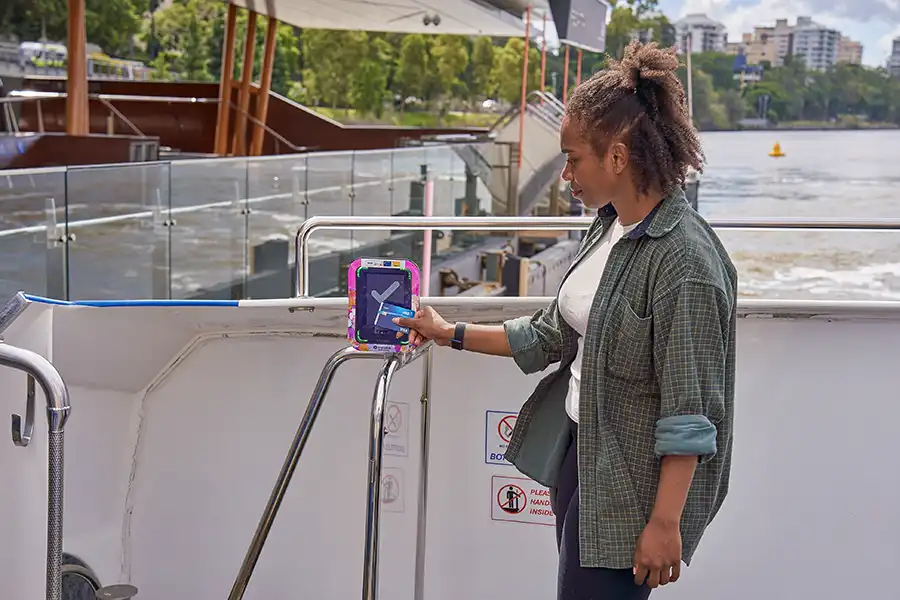
Ask someone why they don't use public transport, and you'll often hear about cost or reliability. But there's a quieter, frequently overlooked deterrent: friction. Every small interaction, from a missed interchange to tapping on at a crowded gate, can add up to a perceived inconvenience. And in cities where car travel is the norm, these moments can be enough to tip the balance.
Friction is significant when it comes to modal shift. If a transport experience feels slow, clunky or uncertain, people default to driving. And it's not just the fare system. One of the most studied friction points is interchange delay. Research suggests that waiting more than five minutes during a transfer (for example, from a bus to a train) can significantly reduce someone's likelihood of using that option again.
Another powerful way to strip friction from the journey is through contactless EMV payments, where riders can simply tap their bank card or mobile wallet to travel. By removing the need to buy, top up, or manage a separate transit card, agencies eliminate a key barrier for occasional users, tourists, and anyone caught without their usual fare media. It’s a small shift in technology that has a big psychological impact, the same card you use for coffee or groceries can now get you across the city.
Defining Frictionless in Public Transport: From Theory to Practice
"Frictionless" is becoming a buzzword, but what does it mean in public transport? It's not just about contactless payments or using your phone instead of a card. Truly frictionless travel removes the need to interact at all: no tapping, no scanning, no stopping.
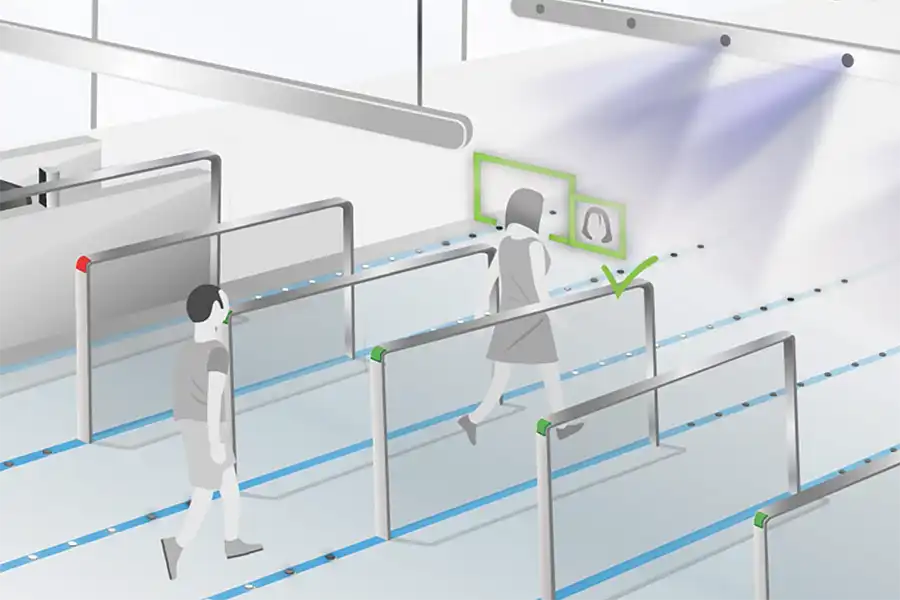
In practice, frictionless travel looks different depending on the environment:
- Gated environments (e.g. train/metro stations): The goal is to remove the need to present a card or device at all. Gates should simply open when authorised users approach.
- Ungated environments (e.g. bus stops, ferry wharves): The challenge is even greater, as there may be no physical infrastructure to interact with at all. Detection needs to happen invisibly, but still reliably and securely.
Importantly, frictionless systems must still provide confirmation and clarity. People want to know that they've been seen, charged correctly, and that the system is working. A truly seamless experience still needs to feel reassuringly visible, even when it's largely invisible.
And it's not just about efficiency. When done well, frictionless design can improve accessibility for people with mobility challenges, sensory impairments, or those travelling with children or luggage. As the saying goes, "design for the edge, and everyone benefits."
The Technology Landscape
Several emerging technologies are shaping the push toward frictionless travel. Each brings its benefits, challenges, and level of readiness.
Biometrics
Technologies like facial recognition, palm-vein scanning and iris detection offer unique identifiers that could enable truly hands-free access. That said, speed and trust remain critical hurdles. Most systems still aren’t fast enough for high-throughput environments like busy train stations.
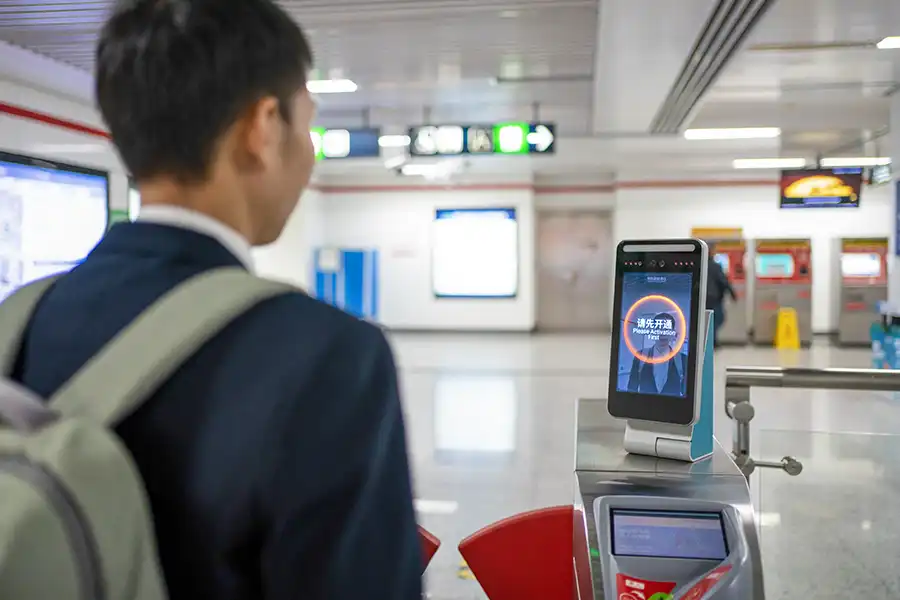 In China’s Shenzhen subway, for example, facial recognition combined with 5G-enabled turnstiles allows passengers to pass through gates as the system deducts payment.¹ Palm-vein authentication is also gaining traction as a fast, contactless option, with some metro systems now allowing payment simply by scanning the unique vein pattern in a commuter’s hand.
In China’s Shenzhen subway, for example, facial recognition combined with 5G-enabled turnstiles allows passengers to pass through gates as the system deducts payment.¹ Palm-vein authentication is also gaining traction as a fast, contactless option, with some metro systems now allowing payment simply by scanning the unique vein pattern in a commuter’s hand.
Privacy remains a flashpoint. Centralised storage of biometric data is a turn-off for many. Local registration terminals, similar in concept to how Apple keeps your Face ID data on your device, can help. Data could be held temporarily at a kiosk, used for authentication, then wiped, reducing identity-theft risks.
For now, biometric systems work best in low-volume, “slow-lane” scenarios or pilot programmes. They’ve not quite ramped up to handle the crush-hour commuter surge, at least not yet.
GPS and Phone-Based Detection (BIBO and CIBO)
Using a passenger's mobile device to determine when and where they board and exit a service opens the door to "Be-In, Be-Out" (BIBO) and "Check-In, Be-Out" (CIBO) models. Trials show this can be highly accurate in less dense environments.
However, BIBO requires continuous GPS tracking, which drains battery life and raises privacy concerns. Many people are reluctant to let a transport agency track their location all day, just in case they use a bus. CIBO is seen as a practical compromise: in this model users activate tracking for a limited time when they know they'll travel. With CIBO passengers are also making a conscious decision before using public transport and are therefore more likely to remember there will be a charge to their acount, leading to reduced support costs from dealing with “unexpected” charges
Ultra-Wideband (UWB);
UWB offers precision location tracking at short range. Cubic's new FEnX fare gate shows that a user can walk through a gate with their phone in their pocket, and the system recognises and opens for them without delay.
It's fast, secure, and doesn't require users to slow down or interact. While UWB isn't available in all phones yet, adoption is growing. Financial institutions are already looking into UWB for retail payments, suggesting standardisation is coming. In time, this could support both account-based and open payment models, enabling tap-free gates that process transactions as people walk through.
Long-Range RFID for Accessibility
Some cities already provide long-range RFID tokens to passengers with disabilities. When the token is detected near a gate, it opens automatically. The downside is that these signals are imprecise, so if there too many in one area, the system can't tell who's who. For now, these solutions work because they are limited to small user groups where it is unlikely that more than one traveler will be using an accessible gate at the same time.
What's Been Retired
Bluetooth Low Energy (BLE) was once a contender, but has largely been abandoned due to imprecise position detection and interference in crowded environments.
Account-Based Travel: The Quiet Enabler
Behind every frictionless transit experience is a smart, flexible back office, and that's where Account-Based Ticketing (ABT) comes in. ABT moves the "intelligence" away from the physical card or validator and into the cloud. It doesn't matter what token you use, a mobile phone, a contactless card, a biometric ID - it's all just a pointer to your travel account.
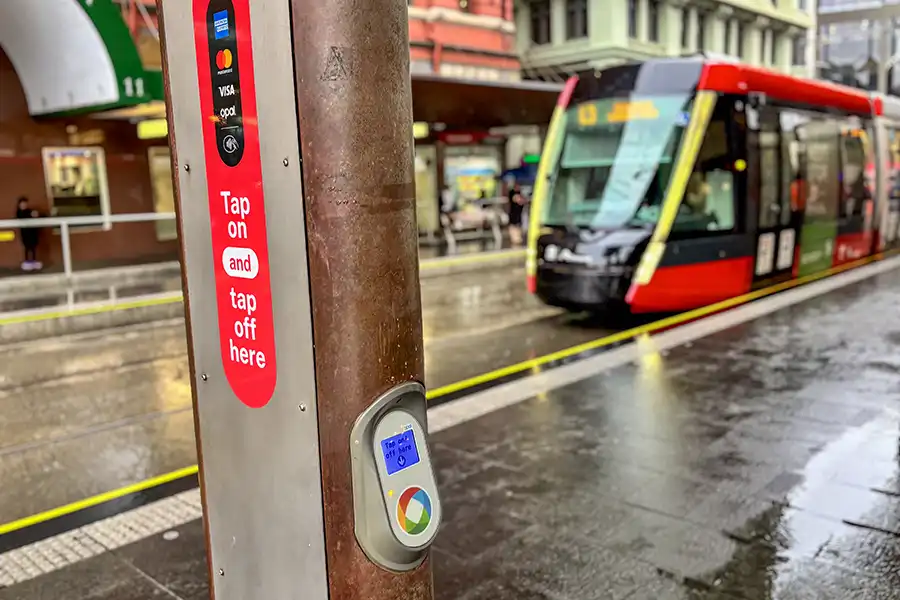
That flexibility is what makes technologies like UWB gates, GPS-based tracking or biometric entry even possible. The devices don't need to support on-card stored value or fare logic. Instead, they simply check a risk list for known blocked tokens and tell the system, "this person travelled," and the central fare engine handles the rest.
ABT is also what enables different fare models, daily caps, distance-based fares, and time-based passes to be applied consistently, regardless of how someone enters the system. And as we edge closer to real-time payments via open banking APIs, ABT will continue to evolve. It's already supporting closed-loop travel via virtual cards. In the future, it could allow seamless payment directly from your bank account, bypassing the current credit card networks altogether.
Frictionless travel can't exist without account-based infrastructure. It's not the flashy part, but it's the essential one.
Travel Frictionless for Whom? Balancing Inclusion, Trust and Scale
Frictionless design can't come at the cost of equity. Not everyone wants, or can afford, to carry a smartphone or opt into location sharing. Others may have genuine concerns about biometric data, privacy, or surveillance. Agencies must offer choice, not compulsion.
One option already in use is issuing long-range RFID tokens to specific user groups, like wheelchair users. While not scalable, these devices can help individuals access hands-free travel without relying on smartphones. Similarly, designated biometric lanes could be available for those who want them, without being the only option.
It's also vital to consider trust. Many passengers are happy to share data with Apple or Google because the trade-off is clear. But they may feel differently about a government agency storing their location history. Transparency and opt-in design are essential. Frictionless systems should enhance freedom, not compromise it.
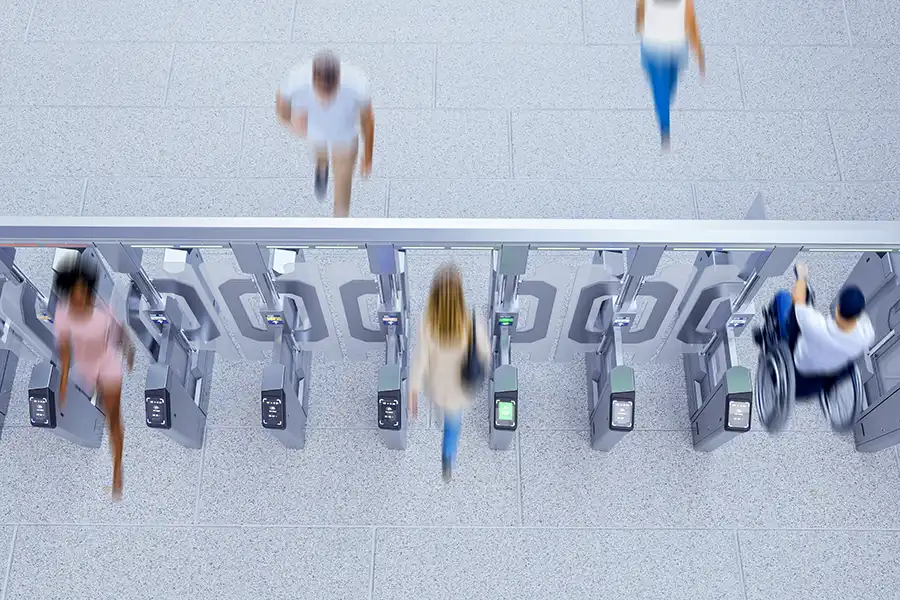
This balance extends to fare enforcement. In a system without gates, detecting fare evasion relies on back-end intelligence, analysing travel data for missing payments, tracking account credentials, using roving inspectors, and applying AI to flag anomalies. The aim is targeted, after-the-fact action that preserves seamless movement for paying passengers, without adding barriers that undermine the frictionless promise.
If we design only for the mainstream, we risk excluding the very people public transport is meant to serve. Frictionless technology should make things better for everyone, especially those who need it most.
What's the Business Case?
Removing friction won't necessarily save agencies money in the short term. Gate hardware, mobile app development, and back-office integrations all come with a price tag. But the return lies in increased ridership.
When you reduce friction, you reduce barriers to using public transport. For many people, the deciding factor between driving or catching a bus isn't just time or cost, it's effort and confidence, or simply the perceived "mental load" required to take a journey on public transport. A system that works invisibly and intuitively encourages habitual use.
More riders mean broader benefits. Increased public transport use leads to fewer cars on the road, lower emissions, reduced congestion, and better economic access for people across a city. These are government-level wins, not just agency KPIs.
What's Next?
It's not a question of if cities will pursue frictionless transport; it's how soon. The enabling technologies are already here. What's missing is widespread integration, policy support, and a willingness to rethink the travel experience.
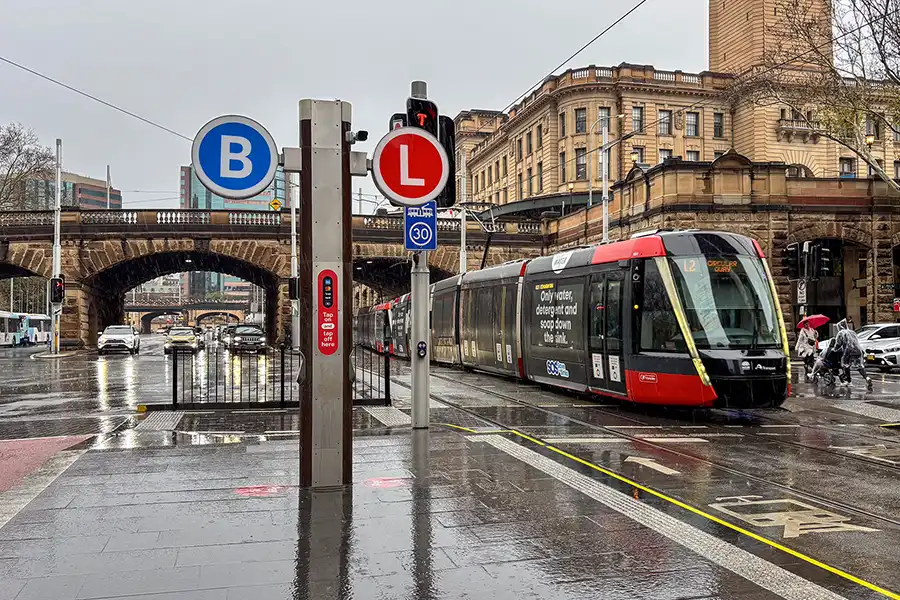
Cities with modern ABT infrastructure are in the best position to lead. Mid-sized networks may even move faster, as they can trial and scale new tech without disrupting millions of daily trips. The agency that gets this right won't just improve efficiency. It will reframe what public transport feels like: reliable, dignified, even delightful.
The shape of that transition will vary. Gated systems, such as New York, can integrate new tech in ways that directly address fare evasion rates, while open or ungated networks, common in parts of Germany where fare evasion is minimal, can focus more on convenience and speed. Regional priorities will influence whether the emphasis is on security, throughput, or customer experience.
As standards mature and devices catch up, expect to see more pilot programs, public-private partnerships, and conversations about privacy, payments and personalisation. The transition won't happen overnight, but the direction is clear.
Conclusion
Frictionless transport isn't a single product or platform. It's a design mindset, one that removes unnecessary steps and lets people move through their cities with ease. It starts with account-based systems, but it's enabled by a host of emerging technologies: UWB, GPS tracking, biometrics, real-time payments.
The agencies and cities that succeed will be those that balance innovation with inclusion. Because the goal isn't just convenience, it's access. If we can make travel effortless for everyone, we do more than modernise public transport. We unlock it.